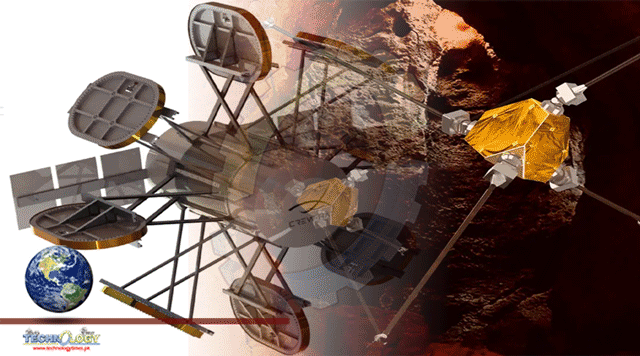NASA has revealed the projects that will get funding under its NASA Innovative Advanced Concepts (NIAC) program, which seeks to advance game-changing mission designs and never-before-seen space exploration technology.

NASA has revealed the projects that will get funding under its NASA Innovative Advanced Concepts (NIAC) program, which seeks to advance game-changing mission designs and never-before-seen space exploration technology. This section discusses five of the concepts and how they will be applied.
Human exploration spacecraft shielding
Astronauts traveling to the moon or Mars in the future will almost certainly encounter a barrage of dangerous space radiation, including high-energy particles and nuclei known as cosmic rays. To safeguard personnel, one NIAC study is investigating the concept of a “deployable magnetic shield device,” as the project’s lead, Elena D’Onghia of the University of Wisconsin-Madison, describes it. The CREW HaT system would consist of a ring of electrical coils mounted on arms approximately 5 metres from the main body of the spacecraft. When activated, the technology creates “an extended magnetic field around the ship that deflects cosmic radiation,” according to D’Onghia.
The robot that explores Martian caves
Astrobiologists are eager to explore the numerous Martian cavern openings discovered by circling spacecraft, and ReachBot is a design for a vehicle that would navigate these previously undiscovered subsurface regions. ReachBot works by “reaching booms toward remote objects or surfaces” within these tunnels, according to Stanford University’s Marco Pavone. After securing a boom – effectively an arm – in place, another might release and rearrange itself to allow the robot to crawl. A special “gripper” with needle-like spines would secure the booms to the rock, and a tether attached to the surface would transfer data from the ReachBot while also acting as a power cord.
A mission to return a sample from Venus
Another new NIAC program study will examine how to collect atmospheric samples from Venus’s skies. The technology under consideration would combine a balloon-borne platform with a rocket to collect gases and cloud particles and send them to Earth for analysis. “We are looking for evidence of microbial-type life within the Venus cloud particles, as well as for life itself,” explains Massachusetts Institute of Technology project head Sara Seager.
A solar sail for exploration of the distant planets
It has been decades since scientists have conducted close examinations of the outer solar system’s ice giant worlds. One way we might return is via craft equipped with solar sails, which are propelled through space by the sun’s rays. The SCOPE (ScienceCraft for Outer Planet Exploration) proposal would use this technology by embedding a unique spectrometer sensor—capable of examining the composition of targets—within the solar sail’s physical body.
A mission to intercept an asteroid from the moon
At some point, we may have to safeguard the Earth against a collision with an asteroid or comet. The Pi project will investigate the possibility of utilizing a rocket-launched mechanism to slam an interplanetary intruder with a series of tiny impactors. A system of this type might theoretically include elements located on the moon as well as on Earth. “The moon’s lack of an atmosphere enables continuous monitoring for hazards,” says Philip Lubin of the University of California, Santa Barbara.
Another advantage of having a portion of the system situated on the moon is that the moon’s low gravity would allow scientists to experiment with new sorts of intercept rockets, he says. This is because interceptor ships would not necessarily require a powerful multi-stage liquid-fuel rocket of the magnitude required to escape Earth’s gravity to launch from the surface. Less powerful rockets powered solely by solid fuel would also function.
Source: Space Navy